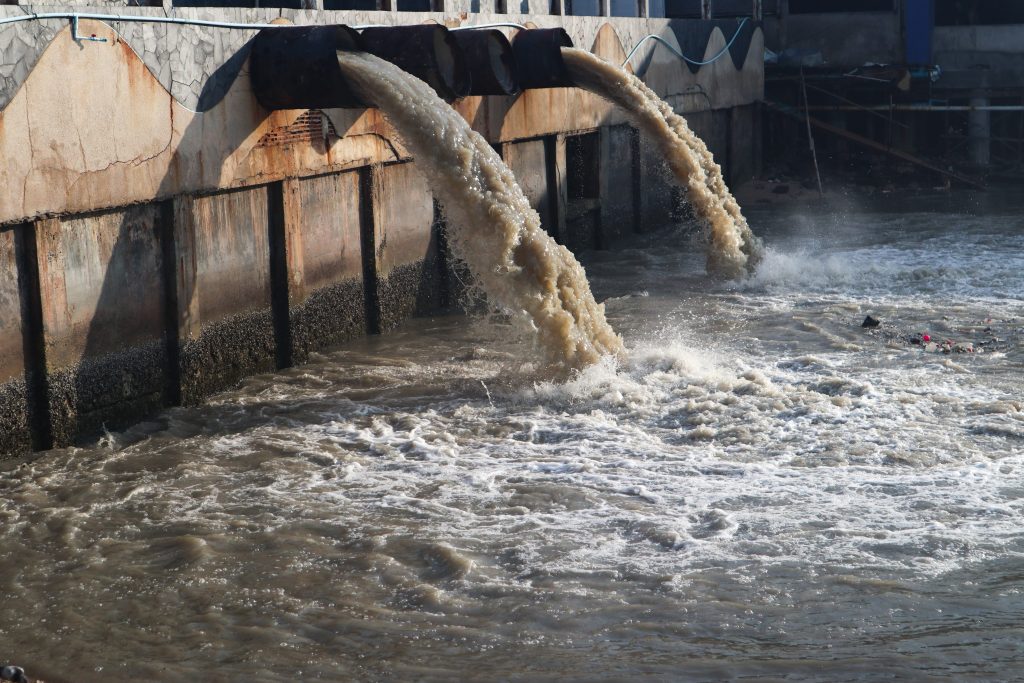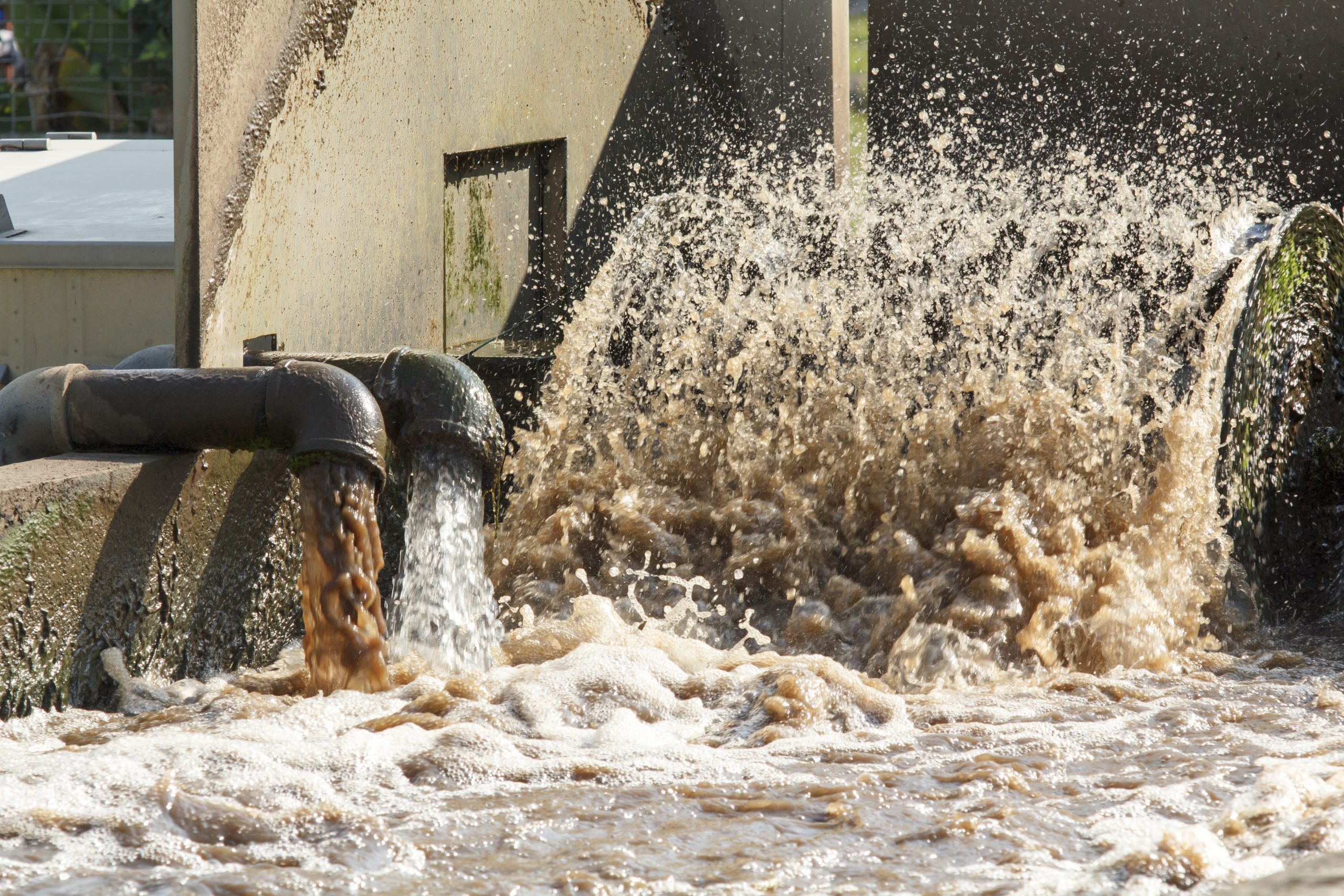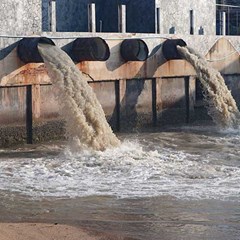Advancements and Advancements in Industrial Waste Water Therapy Technologies
The landscape of industrial wastewater therapy is going through a transformative change, driven by advancements that enhance both performance and sustainability. Emerging modern technologies, such as membrane bioreactors and microbial gas cells, are redefining pollutant elimination processes while adding to energy generation. Resource recuperation methods are obtaining traction, lining up with round economy concepts. As regulatory requirements advance, the combination of AI and equipment knowing right into wastewater monitoring systems promises to make certain and improve procedures conformity. However, the full ramifications of these innovations raise vital inquiries about their scalability and long-term effect on sector practices.
Overview of Drainage Therapy Technologies
Wastewater therapy technologies encompass a range of approaches made to eliminate impurities from industrial effluents before their release into the setting. These modern technologies are critical for maintaining eco-friendly equilibrium and making sure compliance with ecological laws. The main classifications of wastewater treatment consist of physical, chemical, and biological methods, each offering unique functions based on the nature of the impurities present.

Organic therapy methods utilize microbes to degrade raw material, making them specifically effective for organic-rich effluents. Techniques like triggered sludge and biofilm activators harness the all-natural destruction capabilities of bacteria, causing substantial decreases in biochemical oxygen need (BOD)
Advanced Filtration Techniques
Advanced filtering methods stand for a critical evolution in the realm of industrial wastewater treatment, improving the effectiveness of pollutant removal processes. Industrial Waste Water Treatment. These techniques include a variety of innovations, consisting of microfiltration, ultrafiltration, nanofiltration, and turn around osmosis, which supply consecutive obstacles for different bit sizes and chemical structures
Microfiltration and ultrafiltration utilize membrane systems to remove put on hold solids, microorganisms, and bigger natural particles, enhancing the high quality of effluent before further treatment. Nanofiltration links the gap between ultrafiltration and turn around osmosis, properly getting rid of divalent ions and natural substances, hence lowering the lots on downstream procedures.
Reverse osmosis provides the highest degree of filtration by enabling only water and small particles to travel through its semi-permeable membranes, making it perfect for reclaiming high-quality water from commercial effluents. Recent advancements in membrane layer innovation, including the growth of even more resilient and fouling-resistant products, have significantly boosted operational efficiency and minimized costs.
Including these sophisticated filtration strategies not only boosts the general therapy process yet likewise adds to sustainability efforts by enabling water reuse and source recovery in commercial setups. (Industrial Waste Water Treatment)
Biological Therapy Developments

Additionally, the development of crafted biological systems, such as membrane bioreactors (MBRs), incorporates biological therapy with sophisticated membrane purification. This combination permits higher effluent top quality and minimized footprint, making it ideal for space-constrained industrial centers. Advancements in genetically engineered bacteria have additionally emerged, boosting the biodegradation of particular impurities, such as pharmaceuticals and hefty metals, that are traditionally testing to remove.
Furthermore, the implementation of bioaugmentation methods, where useful germs are introduced to boost the existing biological therapy processes, has actually shown appealing results in enhancing therapy performance. These advancements collectively represent a fad towards more lasting and efficient biological treatment techniques that can adapt to the developing intricacies of commercial wastewater streams. As industries proceed to focus on environmental compliance, these biological technologies will play a vital duty in wastewater monitoring.

Resource Recovery Approaches
In industrial settings, the assimilation of resource recuperation techniques has come to be progressively vital for boosting sustainability and reducing waste. These approaches concentrate on extracting useful materials and power from wastewater streams, thus changing prospective toxins into multiple-use resources.
One noticeable technique is nutrient healing, where nitrogen and phosphorus, frequently existing in excess in wastewater, are caught and exchanged plant foods. This not only minimizes ecological effects yet also supplies a round economic climate remedy for agricultural applications. Furthermore, modern technologies such as anaerobic digestion permit the conversion of natural waste into biogas, a renewable resource source that can balance out nonrenewable fuel source use in industrial procedures.
In addition, advanced filtering and membrane layer technologies help with the recuperation of commercial by-products such as salts and steels. These recouped products can be reintegrated into production procedures, lowering my review here the need for virgin resources.
Future Trends in Waste Water Administration
As sectors significantly prioritize sustainability, the future of wastewater management is readied to go through considerable makeovers. Technical advancements, such as expert system and artificial intelligence, will certainly make it possible for extra reliable surveillance and monitoring of wastewater systems. These modern technologies can predict upkeep demands, maximize therapy procedures, and boost decision-making, inevitably lowering functional expenses and ecological effect.
Furthermore, the combination of circular economic climate concepts will certainly play a critical duty in wastewater management. Industries are anticipated to shift in the direction of systems that not only treat wastewater yet additionally recover useful sources, such as nutrients, check this water, and power. This shift will certainly lessen waste and promote the reuse of materials, aligning with global sustainability objectives.
Emerging treatment techniques, such as membrane bioreactors and progressed oxidation procedures, will further boost the efficiency of wastewater treatment, enabling greater high quality effluents suitable for reuse. Additionally, governing frameworks are most likely to progress, highlighting more stringent requirements for wastewater discharge and encouraging sectors to embrace innovative therapy services.
Conclusion
In final thought, the advancement of commercial wastewater treatment innovations shows a substantial shift towards improved performance and sustainability (Industrial Waste Water Treatment). Technologies in advanced filtering methods, organic therapies, and source recovery methods highlight the market's commitment to ecological stewardship.
The landscape of commercial wastewater therapy is undertaking a transformative change, driven by innovations that boost both efficiency and sustainability.Wastewater treatment technologies encompass a variety of techniques created to eliminate pollutants from commercial effluents prior to their launch right into the atmosphere.Taking advantage of the power of organic procedures has actually led to considerable advancements in the therapy of industrial wastewater.Furthermore, the application of bioaugmentation techniques, where useful microorganisms are introduced to enhance the pop over to this site existing biological therapy procedures, has actually shown appealing results in improving therapy efficiency. These advancements collectively represent a trend in the direction of even more efficient and lasting organic treatment approaches that can adapt to the advancing intricacies of industrial wastewater streams.